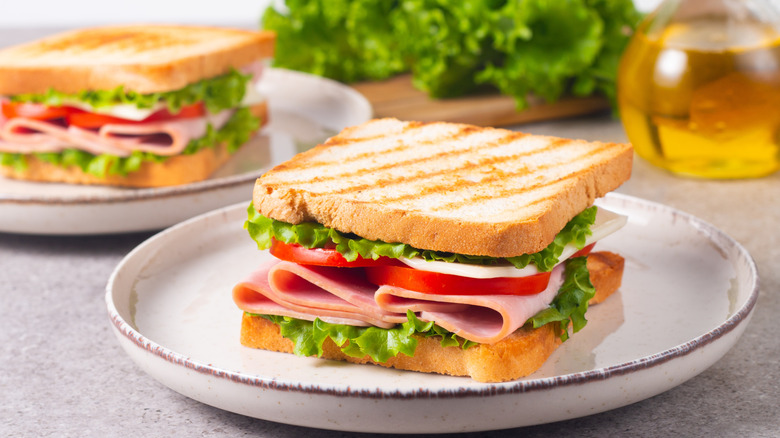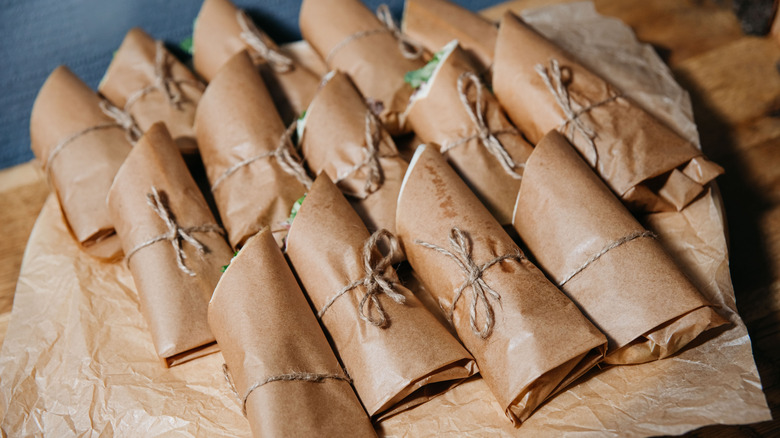The Best Way To Wrap Sandwiches For Any Occasion
The humble sandwich is a stalwart lunch that suits almost any occasion. Whether it's a long road trip or a day at the beach, from a classic ham and cheese to a nontraditional spin on the PB&J sandwich, you just can't beat the classics. That said, you can improve on them. And when it comes to literally wrapping it up, know that not all sandwich wrappings are created equal. To us, the best way uses a special technique with parchment paper. Once you try it, you may never go back.
One of the best ways to wrap a sandwich is to first lay it flat in the center of an appropriately sized piece of parchment paper. Next, fold the paper in thirds over the sandwich and tuck the open ends underneath, between the bread and the paper. Tuck it tight on both ends, and voila! You're finished. This method is better than traditional sandwich wraps or plastic baggies since it helps preserve the flavor without creating condensation or squishing the sandwich.
And this method doesn't strictly require parchment paper, either. If you're wrapping a hot sandwich, it may actually be better to use wax paper, since parchment can get soggy due to steam and become more likely to rip. You should also use wax paper if you make sandwiches with a lot of wet ingredients, like tomatoes or pickles, since that moisture can leak out and make parchment paper soggy.
The case against plastic wrap
There's one material you shouldn't use to wrap your sandwiches: plastic. It may seem odd given that plastic wrap and sandwich bags are a common way to store sandwiches, but there are a few good reasons you should avoid them. The first is that plastic traps air against your sandwich and does not allow circulation, which can make it soggy.
In addition, single-use plastic wrap is bad for the environment. Plastic builds up in the trash, takes ages to break down, and in the meantime leaches potentially harmful chemicals and microplastics into the water and soil. Plastic wrap is also a hazard to animals that ingest it and suffer severe health issues like intestinal blockages or choking and can even die due to swallowing plastic wrap. For pets, this can lead to expensive vet bills and potential tragedy.
Finally, you should avoid plastic wrap because you can't reheat food in it. In certain situations, plastic that's gone through the microwave can melt into your food, and no one wants that. Remember, there's no such thing as microwave-safe plastic. While it is true that if you're on the go, you in all likelihood won't have access to a microwave, it's still a valid point to consider. If you've been looking forward to enjoying a sandwich all throughout a long trip and finally get to your destination to heat it up, the last thing you want is for it to be covered in melted plastic or sagging under plastic-induced condensation.

